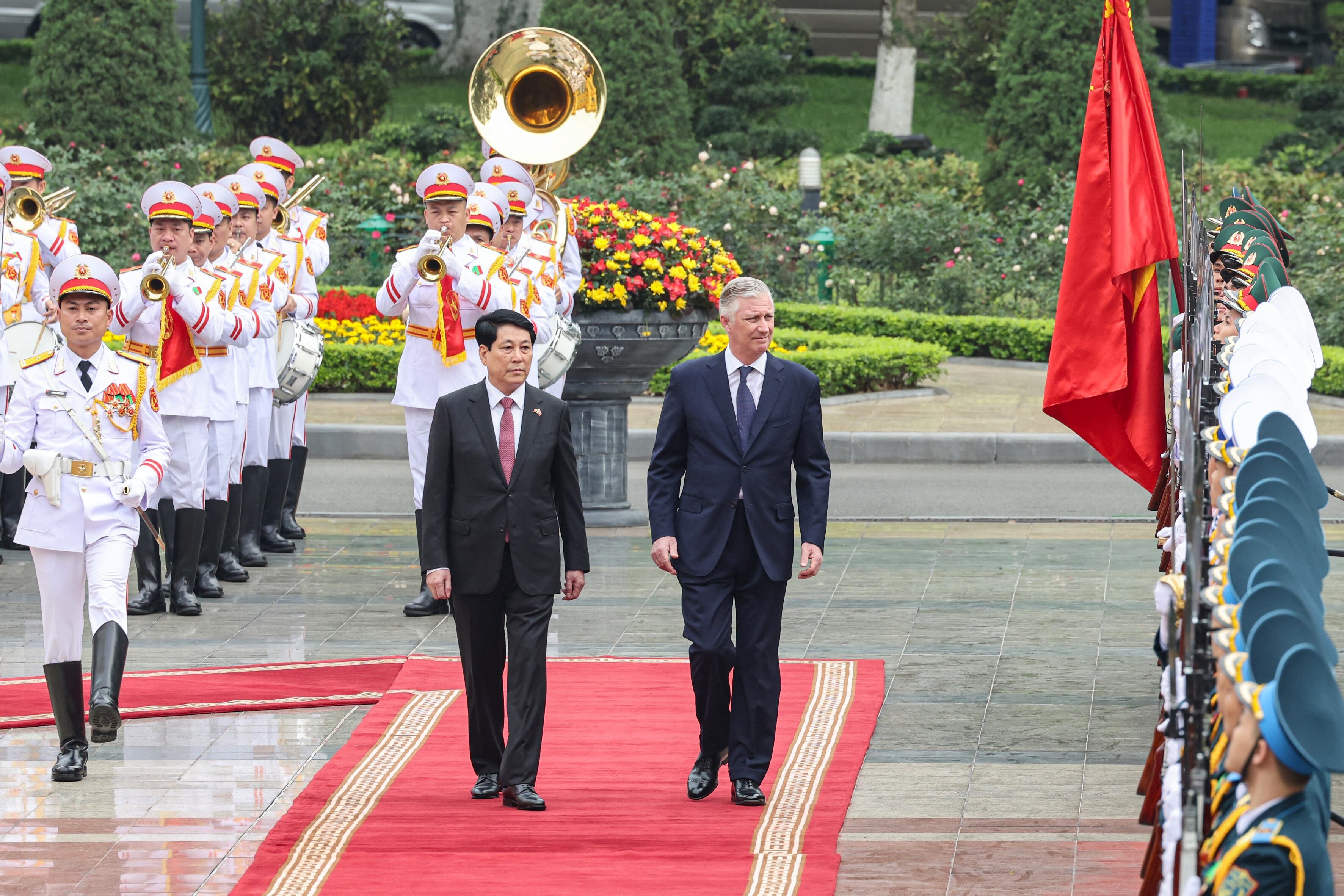Updated April 11, 2025, 08:55 a.m. ET.
BANGKOK – China’s president is heading on a three-nation tour of Southeast Asia after his government hiked tariffs on U.S. goods to 125%, the latest strike in an intensifying trade war that has sunk stock markets and threatens to stunt the global economy.
The increase to 125% from 84%, effective Saturday, matches the recent series of duties levied U.S. President Donald Trump levied on China. The White House has said U.S. tariffs on Chinese goods now total 145% when earlier levies that aimed to discourage fentanyl shipments are included.
“There are no winners in tariff or trade wars. China does not want a trade war, but it is not afraid of one either,” Chinese foreign ministry spokesperson Lin Jian said Friday.
“If the U.S. truly wants to resolve issues through dialogue and negotiation, it should stop applying maximum pressure and acting recklessly. Such tactics never work on China.”
Next week President Xi Jinping will try to build support among some of China’s key allies and trading partners in Southeast Asia. The Chinese president will visit Vietnam on Monday and Tuesday before heading to Malaysia and Cambodia, the state-controlled Xinhua news agency said Friday.
Vietnam and China’s trade has burgeoned over the past two decades, reaching a record US$205.2 billion last year.
China invested US$25 billion in Vietnam in 2023, the fourth largest investor in the country, according to Vietnamese data.
The two sides agreed in August last year to strengthen their top-level “comprehensive strategic partnership” with further trade and investment deals, during a visit by To Lam, general secretary of Vietnam’s communist party, to Beijing.
Vietnam also has a comprehensive strategic partnership with the U.S. and has been locked in top-level talks on a trade deal and ways to reduce its record trade surplus with America.
On Wednesday, the U.S. imposed 46% tariffs on Vietnamese goods, some of the highest in the latest round of Trump-imposed import duties. That was cut to 10% within 24 hours in spite of presidential adviser Peter Navarro calling To Lam’s offer to cut tariffs on U.S. goods “meaningless.”
Navarro said the move wouldn’t dent Hanoi’s trade surplus and accused Vietnam of “cheating” by re-exporting Chinese goods as its own, stealing intellectual property and raising non-tariff barriers.
Vietnam has been hosting a series of foreign leaders as it looks to expand non-U.S. trade. In the past week it agreed deals with Belgium and Spain after the former’s king and latter’s prime minister visited Hanoi. Next month European Commission President Ursula von der Leyen visits the country.
The last leg of Xi’s swing through Southeast Asia next week will be Cambodia, which recently re-opened a naval base upgraded with Chinese support.
Xi’s visit will coincide with 50th anniversary of the Khmer Rouge’s takeover of Cambodia on April 17, 1975.
During their rule, China was the biggest international supporter of the Khmer Rouge regime. About a quarter of Cambodia’s population died during Pol Pot’s ruinous three-and-a-half-year tenure.
Updated to add details on Xi’s visit to Cambodia.
Edited by Stephen Wright.


